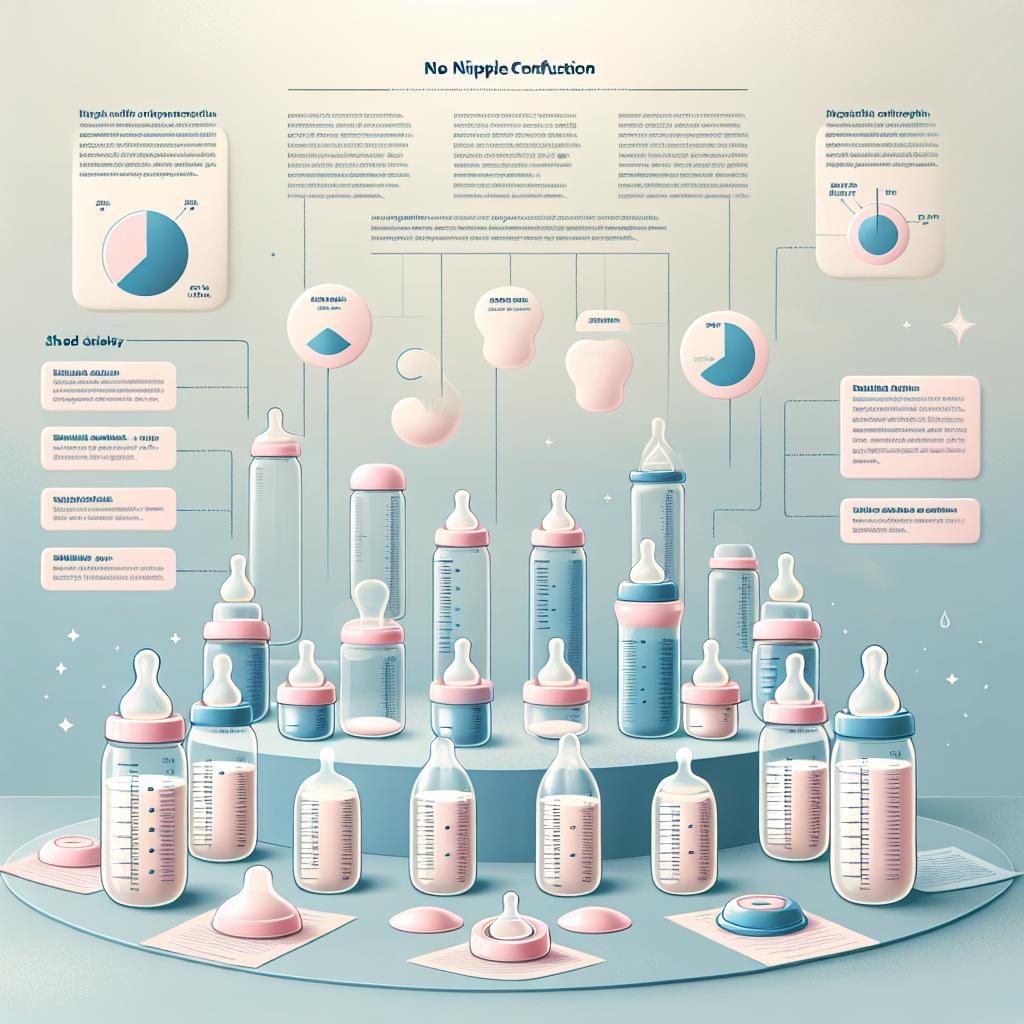Understanding the Concept of Nipple Confusion
In the world of infant feeding, a common concern among new parents is the risk of causing nipple confusion in their baby. This feared phenomenon is characterized by a baby’s refusal to go back to the breast after being introduced to bottle-feeding or a pacifier. However, with careful management, it’s entirely possible to reduce nipple confusion and ensure your baby transitions smoothly between different feeding methods.
What is Nipple Confusion?
Broadly speaking, nipple confusion arises when a baby has difficulty switching between different feeding mechanisms. For instance, they may begin to struggle with breastfeeding after being introduced to a bottle or a pacifier. This issue could potentially lead to less efficient feeding and subsequent weight loss in the infant. For a comprehensive analysis on this topic, check out this article from WebMD and this guide from La Leche League International.
How to Promote Nipple Clarity
There are several strategies that can help reduce nipple confusion and promote nipple clarity among infants. These include:
- Delaying introduction of bottle: Many lactation experts suggest waiting until the baby is about a month old and breastfeeding is well established before introducing a bottle or a pacifier.
- Choosing the right bottle: Some bottles are designed to simulate the natural experience of breastfeeding, which can make the transition less confusing. Our guide on transitional bottles can help you choose the right one.
- Consistent latch technique: Ensuring the baby latches onto the bottle’s nipple the same way they latch onto the mother’s nipple can help reduce confusion.
- Alternating between breast and bottle: Regularly switching between bottle and breast can get the baby used to both.
Comforting Your Baby During the Transition
It’s crucial to remember that every baby is unique. Some may transition smoothly between breast and bottle, while others may need extra comfort and care. Here are a few tips to make the transition less stressful for your little one:
- Stay calm and patient: Babies are sensitive to their caregiver’s emotions. Staying calm and patient can help your baby feel more relaxed during feeds.
- Offer a familiar environment: Feeding your baby in a familiar setting can help them feel more comfortable during the transition. This article on comforting your baby during bottle feeding provides more strategies to ease the transition.
Now that we’ve covered some basics on how to reduce nipple confusion, it’s essential to remember that it’s a process that can take time. Be patient and responsive to your baby’s cues, and don’t hesitate to reach out to healthcare professionals for advice.
Understanding the Misconceptions Around Nipple Confusion
Among the parenting circles, there’s a significant degree of ambiguity surrounding the topic of nipple confusion. The concept of nipple confusion isn’t universally accepted, with some healthcare experts questioning its existence. They argue that the perceived nipple confusion symptoms might be a result of a breastfeeding issue, such as improper latch or milk supply problem. Still, many lactation consultants believe that nipple confusion is real and can impact a baby’s breastfeeding ability. You can read more about these differing viewpoints on nipple confusion in this insightful study from PubMed Central.
Why Some Babies May Experience Nipple Confusion
The process of breastfeeding involves a complex interplay of a baby’s jaw, tongue, and mouth muscles. At the breast, a baby needs to perform a series of movements to extract milk, known as nutritive suckling. The baby opens their mouth wide, extending their tongue to take in as much of the breast as possible to create vacuum pressure for milk extraction.
On the contrary, bottle feeding and pacifier use require a different sucking mechanism known as non-nutritive sucking. Here, extracting milk or soothing is a more passive process since the baby doesn’t have to work as hard.
A baby used to bottle feeding or pacifier use may, therefore, have difficulty reverting to the more dynamic breast feeding technique, hence the confusion. For a deeper understanding of why some babies may experience nipple confusion, head over to this valuable resource from Healthline.
The Controversy Surrounding Nipple Confusion
Despite the potential challenges, many mothers successfully alternate between breastfeeding, bottle feeding, and pacifier use without causing significant breastfeeding problems. It’s, therefore, crucial to factor in these individual differences when considering nipple confusion.
For some babies, early introduction of a pacifier or bottle may disrupt breastfeeding, but for others, it might not present any problems. This point of view is well-detailed in this article from What to Expect.
When to Seek Professional Help
When a baby shows consistent signs of distress during breastfeeding or persistently refuses to feed, it may be time to seek advice from a lactation consultant or a pediatrician. They can assess the situation, offer the needed support, and recommend individualized strategies to solve any feeding difficulties. Additionally, they can guide mothers on how to address underlying breastfeeding issues that may initially have been misattributed to nipple confusion. More on when and how to seek professional help can be found on La Leche League International.
Each feeding journey is different, and each baby is unique. It’s always beneficial not to compare your baby’s feeding habits with others but rather focus on what works best for your baby’s health and happiness.
Your love, patience, and commitment make a world of difference during your baby’s feeding journey. Rest assured that feeling overwhelmed is completely normal. However, with the right approach, support, and information, you can navigate through any feeding challenges.






